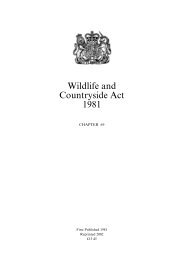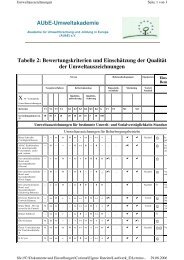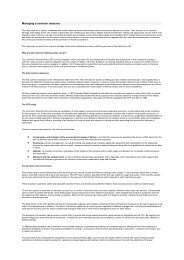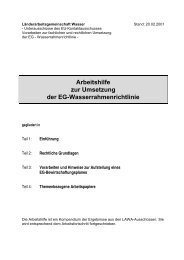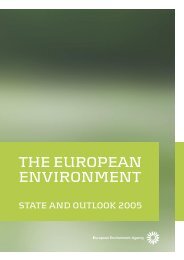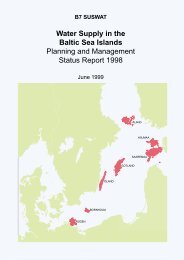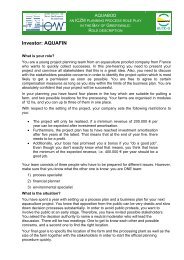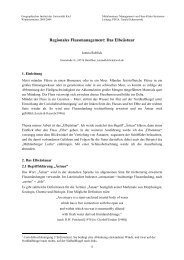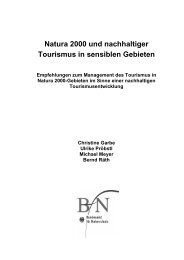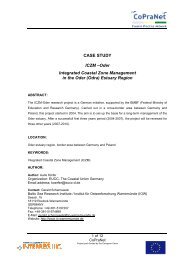View - IKZM-D Lernen
View - IKZM-D Lernen
View - IKZM-D Lernen
You also want an ePaper? Increase the reach of your titles
YUMPU automatically turns print PDFs into web optimized ePapers that Google loves.
Haas & Peekna & Walker Folklore 23<br />
the height of the cliff but not yield as much of an increase in land<br />
area as in western Estonia.<br />
There is a similar song from Northern Estonia (Rüütel 1997: 192),<br />
but it turns the process around so that land becomes sea.<br />
Nüüd laulan mered<br />
murusta,<br />
merekalda’ad kalaksi,<br />
mereliiva linnastesta,<br />
merepõhja põllumaaksa.<br />
(Translated by A. Haas)<br />
Now I’ll sing the sea into grass,<br />
The seashore into fish,<br />
The sea sand into malt,<br />
The sea bottom into a field.<br />
Yet it is interesting that even here, the process ends with the sea<br />
turning into land again. It is unlikely that this song was inspired by<br />
the filling of the ancient Baltic Glacial Lake or Ancylus Lake, which<br />
would have been too slow to be noticed during a human lifespan. Of<br />
course, if people had once observed land emerging from water, then<br />
the opposite could also be conceived. A singer many generations<br />
removed from the original event, and at some distance inland, could<br />
easily transpose things, if the point was to illustrate the power of<br />
song rather than to preserve the news of a seemingly fantastic event<br />
long ago.<br />
In the opening rune of the Finnish-Karelian epic Kalevala, which<br />
Elias Lönnrot compiled on the basis of traditional songs, the world<br />
is created when a tireless swimmer (Väinämöinen in the original<br />
version, his mother Ilmatar in the revised version of the epic), drifting<br />
in the sea, raises a knee – whose round shape would resemble<br />
an emerging sandbar or wave-battered skerry – and thus provides<br />
a nesting place for a bird (a goose, eagle, scaup or redheaded duck<br />
in various versions). When the heat from the hatching eggs causes<br />
the swimmer to stir, the eggs tumble out of the nest, crack open,<br />
and turn into the earth and heavens (Pentikäinen 1989: 131–139;<br />
Honko et al. 1994: 96–97). A similar creation-myth is found among<br />
the Estonians and Ingrians as well, but without superhuman or<br />
divine characters. This has been taken as evidence that these more<br />
naturalistic versions are the closest to the original form of the myth<br />
(Honko et al. 1994: 83). An Ingrian song has a swallow nesting on a<br />
ship, which then wrecks into the black mud and sand of the sea,<br />
from which an island arises (Pentikäinen 1989: 139–140).<br />
www.folklore.ee/folklore/vol23<br />
54




